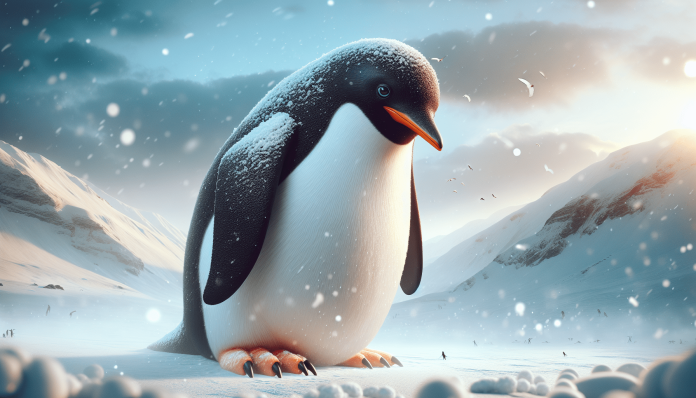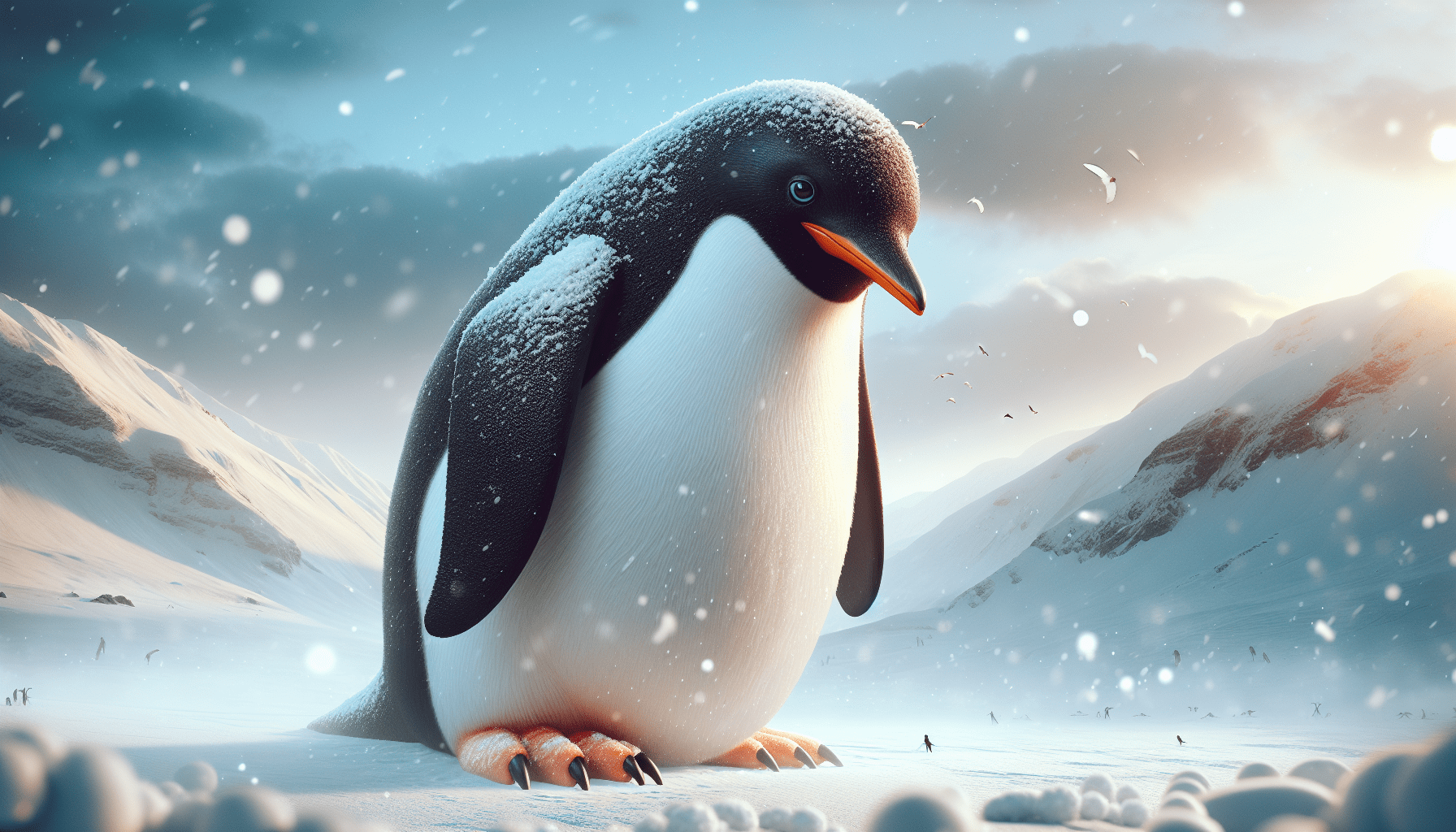
Introduction to Mega Penguins 🐧🌍
What is Mega Penguin? 🐧📖
Mega Penguin, scientifically known as Palaeeudyptinae, refers to a subfamily of extinct giant penguins that once roamed the Earth. These colossal creatures lived during the Paleogene and Neogene periods, approximately 60 to 20 million years ago. They were significantly larger than the modern penguins we are familiar with today, reaching heights of up to 2 meters (6.5 feet) and weighing as much as 100 kilograms (220 pounds).
Discovery and Fossil Evidence 🐧🦴
The first discovery of Mega Penguin fossils dates back to the mid-19th century. Since then, numerous fossils have been unearthed, primarily in regions that once formed part of the ancient supercontinent Gondwana, including present-day Antarctica, New Zealand, and South America. These fossils have provided crucial insights into the evolution, biology, and ecology of these remarkable birds.
Physical Characteristics of Mega Penguins 🐧🏋️♂️
Size and Build 🐧📏
- Height: Mega Penguins stood up to 2 meters tall, making them the tallest penguins to have ever existed.
- Weight: They could weigh up to 100 kilograms, significantly heavier than the largest modern penguin, the Emperor Penguin, which averages around 30 kilograms.
Adaptations 🐧🔧
- Bone Structure: Mega Penguins had denser and more robust bones compared to their modern relatives, aiding in their ability to dive and swim efficiently.
- Flippers: Their flippers were larger and more powerful, providing greater propulsion through water.
Feathers and Coloration 🐧🎨
- Feathers: Fossil evidence suggests that Mega Penguins had feather structures similar to modern penguins, adapted for insulation and streamlined swimming.
- Coloration: While direct evidence of their coloration is lacking, it’s hypothesized that they had counter-shaded plumage, with darker backs and lighter bellies, much like modern penguins, to aid in camouflage while hunting.
Habitat and Distribution 🐧🌏
Geographic Range 🐧🗺️
Mega Penguins inhabited coastal regions of the ancient Gondwana supercontinent. Fossil sites include:
- Antarctica: Numerous fossils have been found in Seymour Island, indicating that these giant penguins thrived in the region when it was much warmer than today.
- New Zealand: Sites such as the Waipara River have yielded significant Mega Penguin fossils.
- South America: Fossils have been discovered in Patagonia, providing evidence of their widespread distribution.
Environmental Conditions 🐧🌡️
During the time Mega Penguins lived, the climate of these regions was significantly warmer, supporting diverse marine ecosystems. The rich marine life provided ample food sources for these large birds.
Diet and Feeding Habits 🐧🍴
Predatory Nature 🐧🦈
Mega Penguins were apex predators in their marine environments. Their diet primarily consisted of:
- Fish: The mainstay of their diet, they hunted a variety of fish species.
- Squid and Cephalopods: They likely preyed on squid and other cephalopods.
- Crustaceans: Small marine crustaceans would also have been part of their diet.
Hunting Techniques 🐧🎣
- Diving: Mega Penguins were adept divers, capable of reaching significant depths to catch prey.
- Speed and Agility: Their large, powerful flippers allowed them to swim swiftly and maneuver effectively underwater.
Reproduction and Life Cycle 🐧🍼
Breeding Habits 🐧💑
- Nesting Sites: Similar to modern penguins, Mega Penguins likely bred in colonies. Fossilized nesting sites suggest communal nesting habits.
- Eggs and Chicks: They would have laid eggs, with parents sharing incubation duties. The chicks, once hatched, were nurtured until they could fend for themselves.
Growth and Development 🐧📈
- Rapid Growth: Like modern penguins, young Mega Penguins probably experienced rapid growth to reach maturity quickly.
- Longevity: Their exact lifespan is unknown, but they likely had a life expectancy comparable to modern penguins, which can live up to 20 years or more.
Behavior and Social Structure 🐧🏰
Social Dynamics 🐧👥
- Colonial Living: Evidence suggests that Mega Penguins lived in large colonies, which provided protection and enhanced breeding success.
- Communication: They likely used vocalizations and body language to communicate, similar to their modern counterparts.
Migration Patterns 🐧🛤️
- Seasonal Movements: Mega Penguins may have undertaken seasonal migrations to follow food sources and optimal breeding sites.
- Habitat Utilization: They utilized a range of coastal and marine habitats, adapting to varying environmental conditions.
Extinction and Legacy 🐧⚰️
Causes of Extinction 🐧❌
- Climate Change: Shifts in climate leading to cooler temperatures and ice formation in Antarctica could have contributed to their decline.
- Competition: The emergence of marine mammals such as seals and cetaceans may have introduced new competition for food resources.
- Predation: Increased predation by emerging marine predators could have impacted their survival.
Paleontological Significance 🐧🧬
The discovery and study of Mega Penguin fossils have provided invaluable insights into the evolution of penguins and their adaptation to marine life. These fossils help scientists understand how ancient penguins adapted to their environments and how modern penguins have evolved from these giants.
Conservation Lessons from Mega Penguins 🐧🌳
Understanding Climate Impact 🐧🌡️
The extinction of Mega Penguins underscores the impact of climate change on species survival. Studying their fossils helps scientists understand how past climate shifts influenced marine ecosystems and the distribution of species.
Protecting Modern Penguins 🐧💖
- Habitat Conservation: Efforts to protect the habitats of modern penguins are crucial to their survival. Marine protected areas and sustainable fishing practices are essential.
- Climate Action: Addressing climate change through global cooperation is vital for preserving the habitats and food sources of penguins and other marine species.
Fascinating Facts About Mega Penguins 🐧🧐
Evolutionary Marvels 🐧🔍
- Giant Evolution: The evolution of Mega Penguins into such large sizes showcases the diverse evolutionary paths taken by ancient birds.
- Adaptation: Their adaptations to marine life, including diving capabilities and robust physiques, highlight the incredible versatility of penguins.
Cultural Impact 🐧🎨
- Popular Culture: Mega Penguins have captured the imagination of people worldwide, appearing in documentaries, books, and even popular media.
- Scientific Inspiration: Their discovery continues to inspire paleontologists and researchers to uncover more about the ancient world.
Conclusion: Appreciating the Mega Penguin 🐧🌟
Mega Penguins were truly remarkable creatures that dominated their marine environments millions of years ago. Understanding what is Mega Penguin not only enriches our knowledge of ancient wildlife but also provides valuable lessons for modern conservation efforts. By studying their fossils, we gain insights into the evolution and adaptation of penguins, inspiring us to protect the biodiversity of our planet. 🐧🌿



















